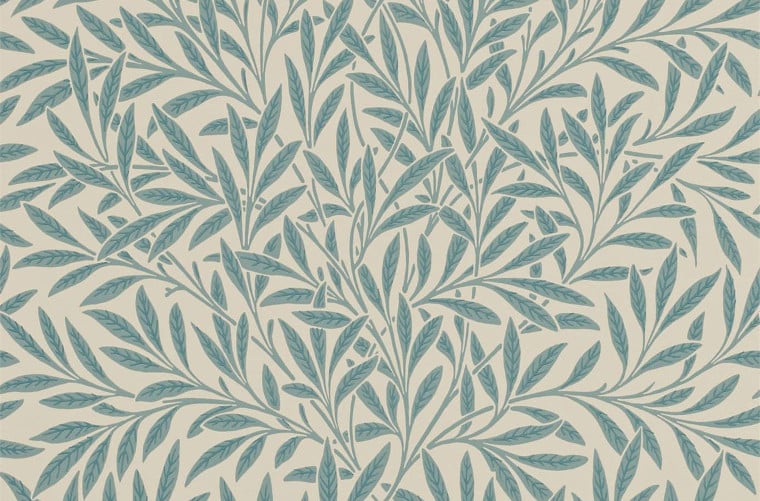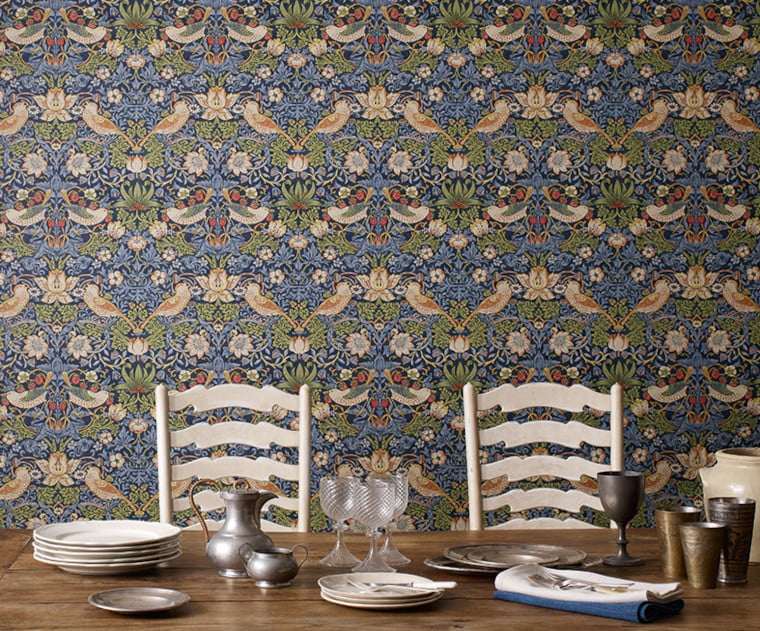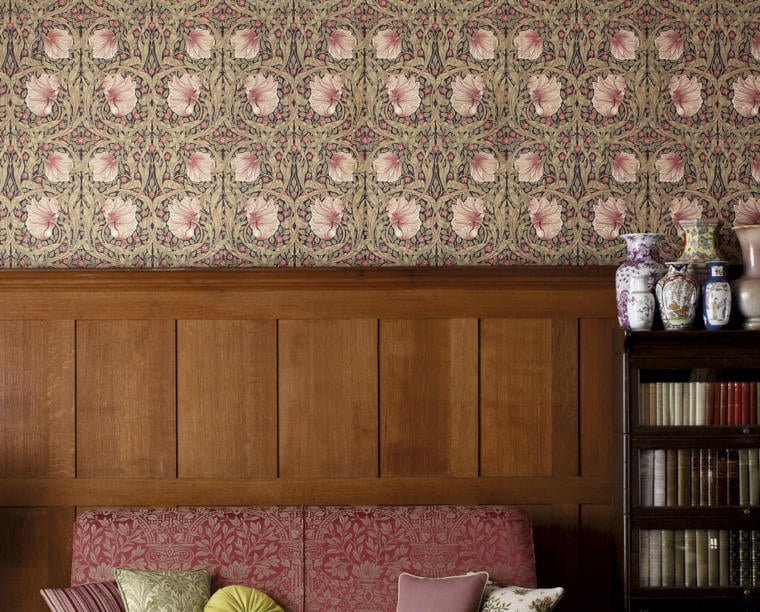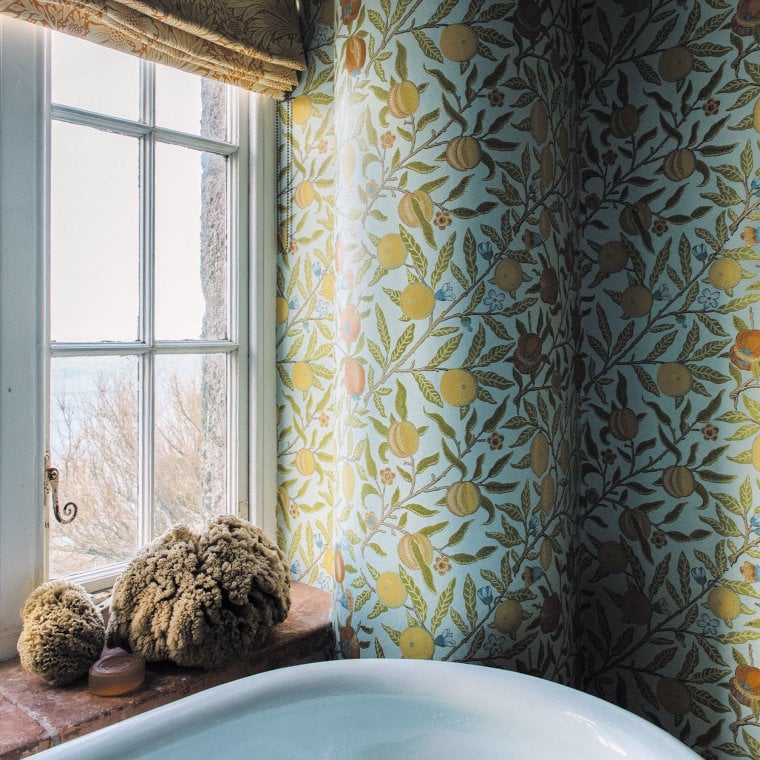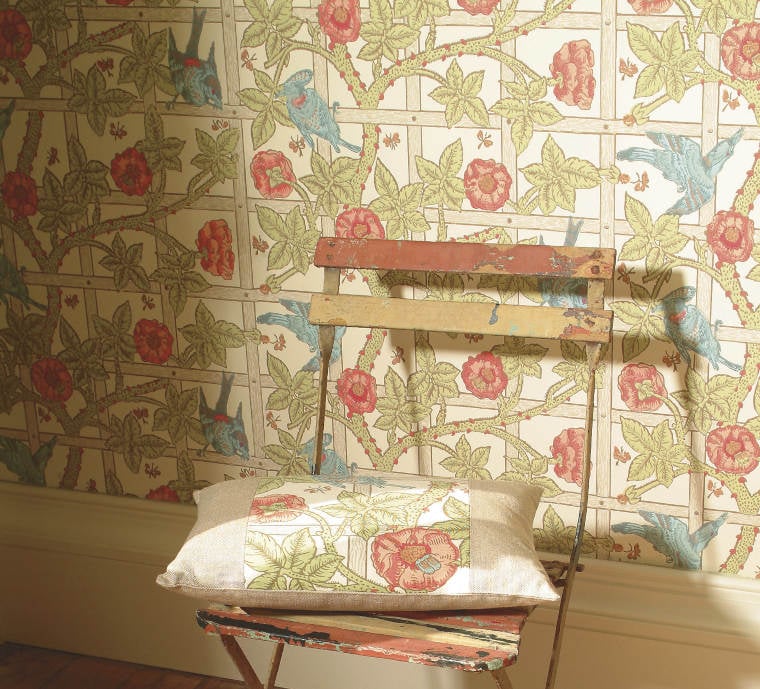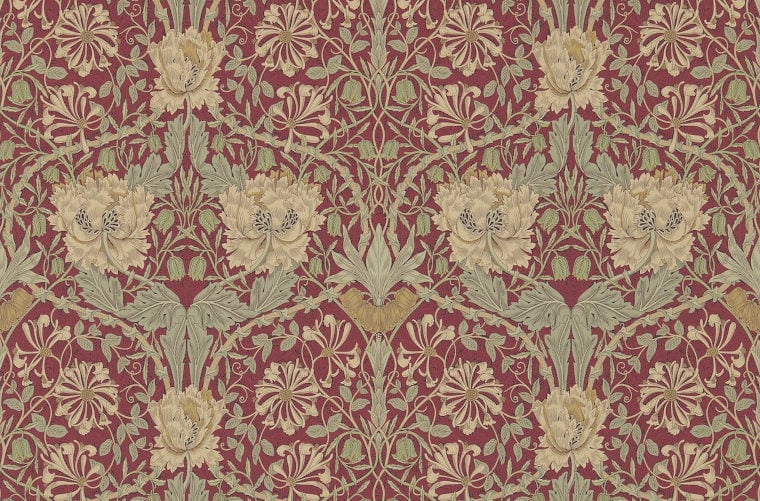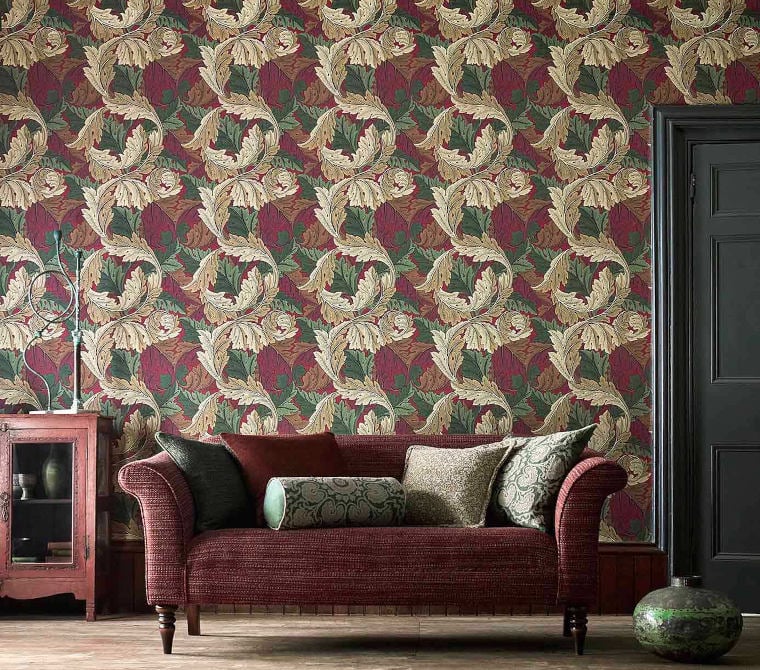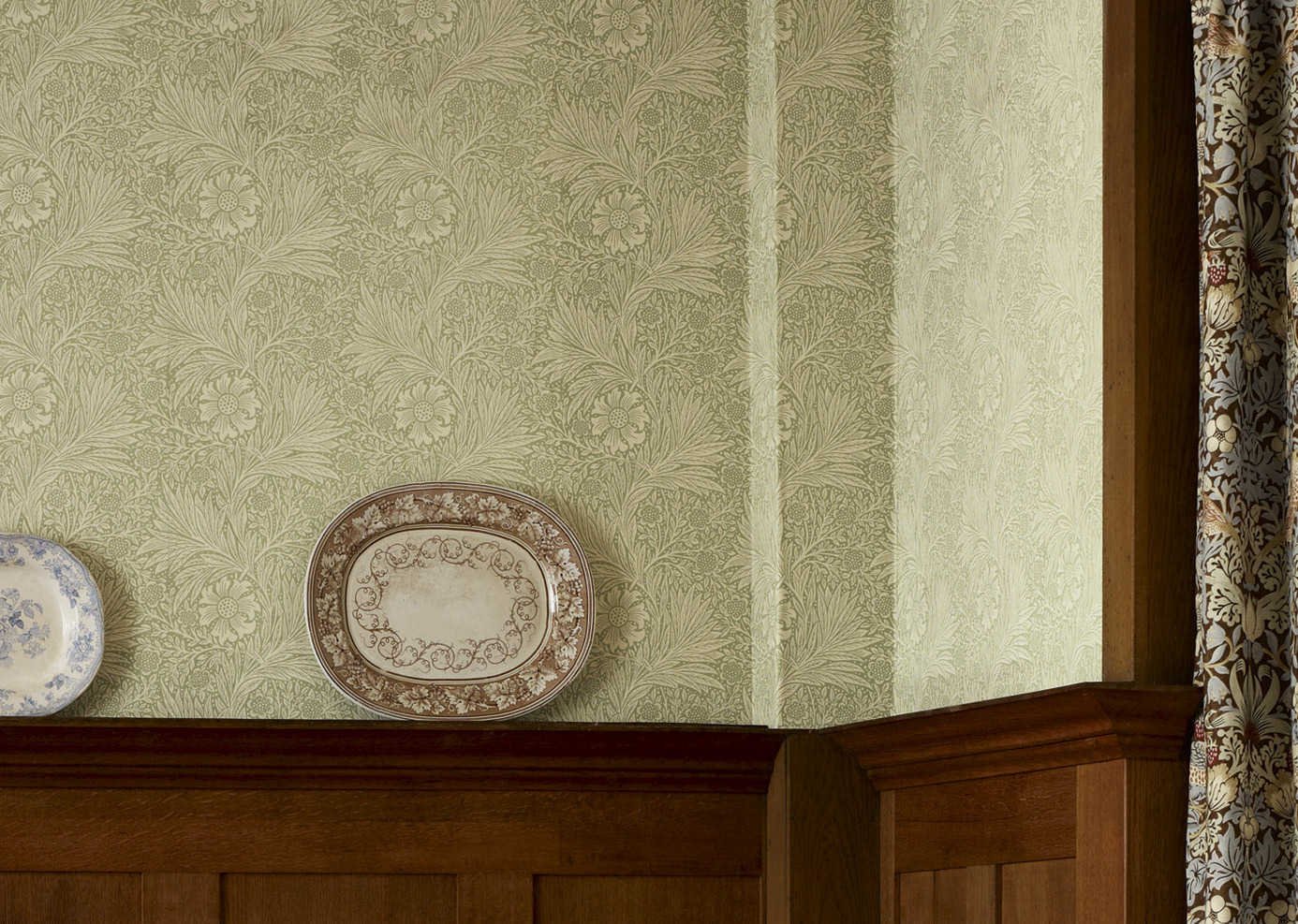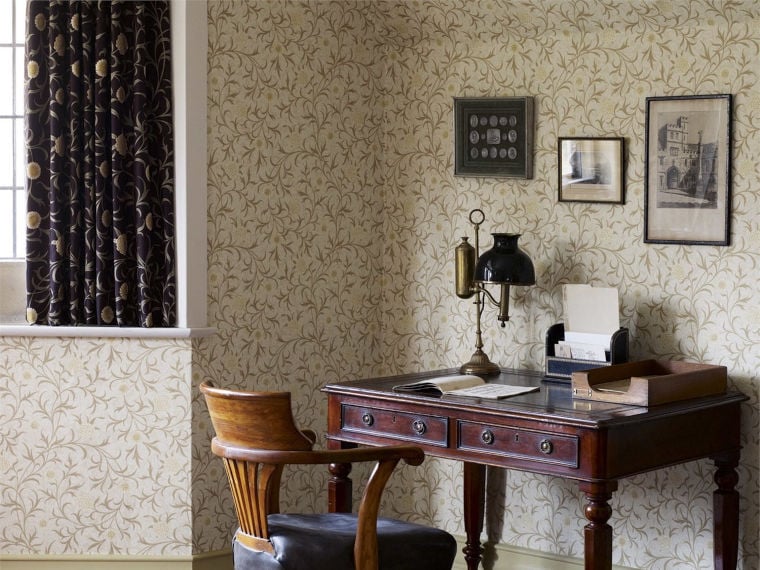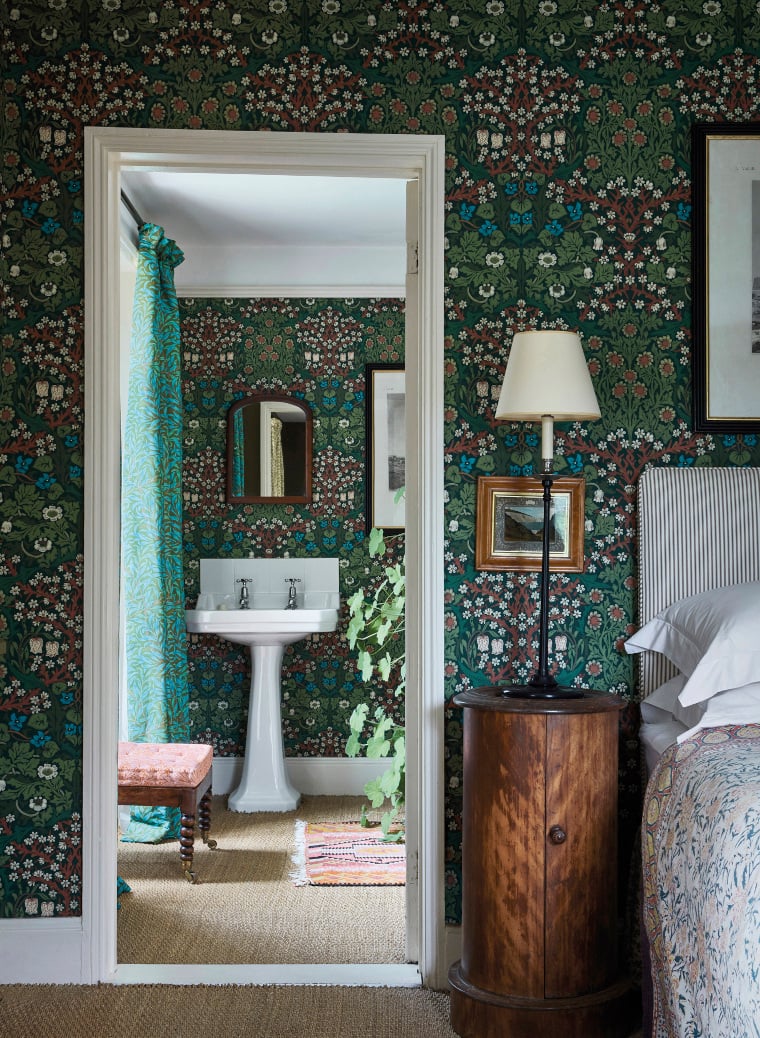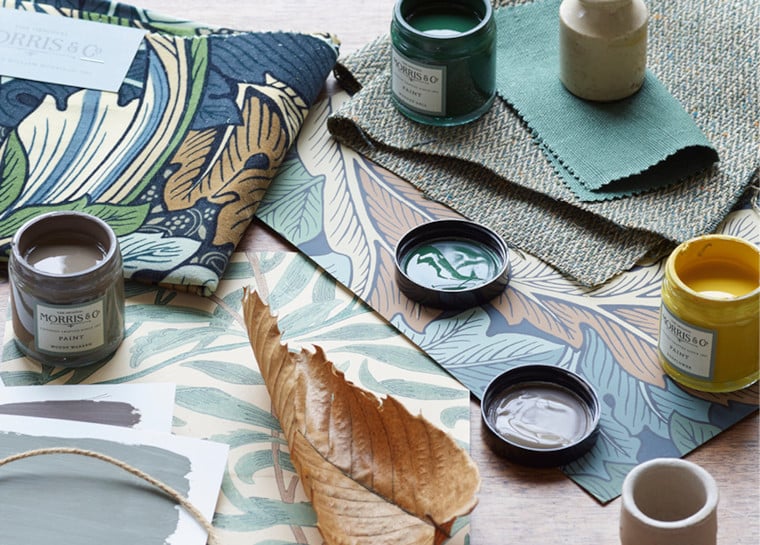The Spirit of Arts & Crafts: Wallpapers and Colours by William Morris
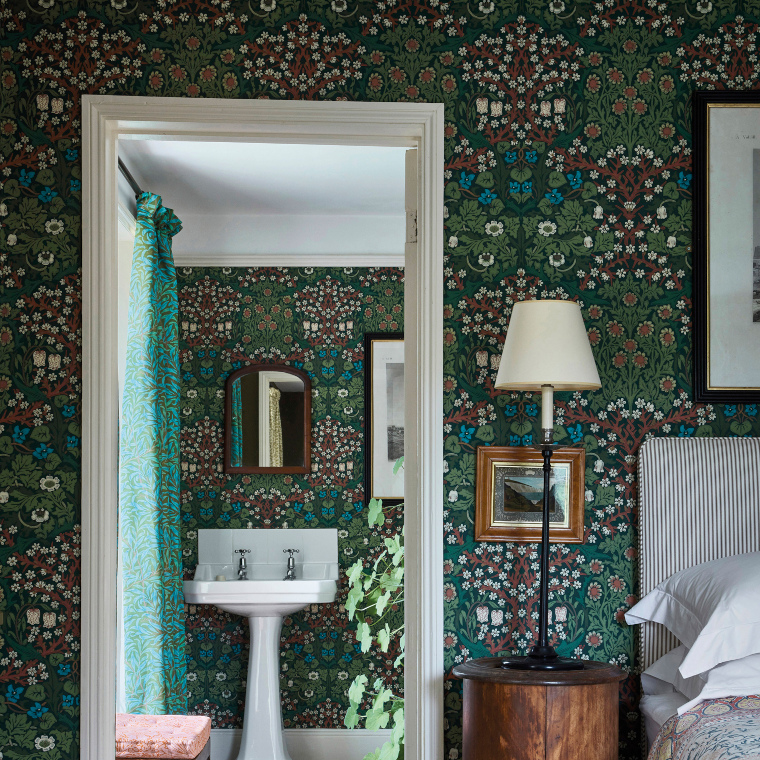
The wallpapers by William Morris continue to inspire to this day. The co-founder of the English Arts and Crafts movement succeeded in the 19th century in what designers rarely achieve: his classics not only suit the classic British interior style, but can also be used for modern wall designs.
Content:
Who was William Morris?
What were the ideas of the Arts and Crafts movement?
When were the first wallpapers produced by William Morris?
What were William Morris' sources of inspiration?
What makes the visual language of William Morris wallpapers so special?
Are new motifs by William Morris still being published today?
How were William Morris' motifs developed further?
Why do the colours from Morris & Co complement the wallpapers from William Morris so well?
Who was William Morris?
Born in 1834, William Morris had a decisive influence on the English design world of the late 19th century. Until his death in 1896, his wallpaper and textile patterns made him a designer known throughout Europe.
Morris is considered the most important pioneer of the English Arts and Crafts movement, a precursor of German Art Nouveau. Among other things, the movement ensured the revival of traditional British textiles and crafts, which had lost importance since the Middle Ages and the Renaissance.
What were the ideas of the Arts and Crafts movement?
As a child, Morris was already fascinated by the aesthetics of everyday handicraft objects. As a student, he founded the Arts and Crafts movement together with like-minded people. It strove to combine art, crafts and traditional artisanal manufacturing processes. Painting, too, was to become more natural, more artisanal again and to differ from the more academic style taught at the art colleges of the time. Interiors were to be made more homely with pottery, woven objects or handcrafted wooden furniture.
Crysanthemum Wallpaper by Morris & Co
The Arts and Crafts movement rejected the machine production of textiles. It thus also saw itself as a counter-movement to industrialisation, which relied on mass production.
Its design had a great influence on the interior design of houses and churches in English-speaking countries until the early 20th century. At the same time, she inspired the founders of the European Jungendstil. To this day, her design lives on in the wallpapers and fabrics of Morris & Co.
When were the first wallpapers produced by William Morris?
In 1861, William Morris founded the company Morris, Marshall, Faulkner & Co. which traded under the name Morris & Co. from 1875. Initially the company produced furniture, soon the focus was on woven carpets and from 1862 on wallpapers. Wallpapers and fabrics based on the designs of William Morris are still sold under this brand today. In the meantime, it belongs to the British luxury wallpaper manufacturer Sanderson Design Group, which is known worldwide for extremely high-quality wallpapers.
The design of Morris & Co products followed the ideas of the Arts and Crafts movement and was unmistakably inspired by medieval aesthetics and craftsmanship, which had fallen into oblivion over the centuries. Many of the Morris wallpaper designs created in the 19th century were revolutionary for their time. To this day, they have a unique effect and can be used to create accent walls. More subtle colour variations of the motifs are used for entire rooms.
What were William Morris' sources of inspiration?
One of the most important sources of inspiration for William Morris was nature. It shaped his paintings and designs. Even as a child, he was fascinated by the large garden that surrounded his parental home in Essex. In 1860 Morris moved with his wife to the Red House in Bexleyheath, which also had a large garden and became a creative centre for their artistic circle of friends and the Arts and Crafts movement. The garden at Kelmscott Manor, which Morris and his wife occupied in later years, was also a source of inspiration.
For the design of the garden at Red House, Morris and his wife chose native plant species that had been cultivated for centuries, such as lilies, delphiniums, tulips and roses. This was in contrast to the horticultural mainstream of the later 19th century. While exotic, tropical plants in garish colours were widely cultivated in modern greenhouses made of metal and glass, Morris and his wife relied on traditional English garden plants in the wild surrounded by natural materials such as wood and stone. Following the example of medieval gardens, they planted climbing plants and herbs and fenced the beds with wattle and daub. Through his gardens, Morris brought nature right outside his studio. He studied their colours and shapes and incorporated them into his designs.
What makes the visual language of William Morris wallpapers special?
William Morris' plant patterns are not lifelike, botanical drawings. Rather, he works with subtle, stylised allusions to natural forms.
The shape of branches, tendrils, flowers and leaves become flowing lines, elegant swirls and symmetrical patterns in Morris' work. Designs such as Larkspur from 1872, Willow from 1874 or Chrysanthemum from 1887, which are still world-renowned classics among wallpaper patterns, inspire with lush leafy tendrils.
Wallpaper Willow by Morris & Co
Strawberry Thief, Pimpernel and Fruit
The Strawberry Thief design, created by Morris in 1883, shows thrushes stealing strawberries against a background of floral vines and leaves. William Morris' preference for orderly ornamental patterns can be seen here. The pattern was first used as a fabric cover for upholstered furniture, but soon came into use as a wallpaper pattern as well, and to this day provides a unique structure and a lively note in the room. Pimpernel also has this effect. Here Morris uses the mirror symmetry of wild flower heads moved by the wind.
Fruits also appear repeatedly in the design language of William Morris. Fruit, for example, shows citrus fruits, peaches and pomegranates, which bring a fresh ambience to kitchens and dining rooms with their bright colours.
Wallpaper Strawberry Thief by Morris & Co
Wallpaper Pimpernel by Morris & Co
Wallpaper Fruit by Morris & Co
The trellis pattern
Morris' love of order is also expressed in elegant Trellis designs. Trellis was the first wallpaper he designed in 1862. The trellis, which is interwoven with roses and enriched by birds, creates geometric order on the wall.
Trellis wallpaper by Morris & Co
Honeysuckle & Tulip
Honeysuckle & Tulip is an early fabric design that shows interwoven foliage and flowers in a mirrored pattern. The idea of turning the fabric design into a wallpaper design originated in the so-called Honeysuckle Bedroom at Wightwick Manor, for which the fabric had been designed by William Morris and his wife as a wall covering.
Honeysuckle & Tulip wallpaper by Morris & Co
Acanthus
The Acanthus pattern marks the beginning of a period in which Morris created large-scale and opulent designs. With its characteristic curves and superimposed layers, the acanthus leaves of the wallpaper create a three-dimensional effect that is perfect for an accent wall in living rooms and bedrooms.
Acanthus wallpaper by Morris & Co
Marigold and jasmine
Also typical of William Morris's wallpapers is the overlaying of the main pattern with smaller, restrained background patterns. The Marigold design from 1875 follows this concept and was one of the patterns that was produced both as wallpaper and fabric during Morris' lifetime. Similarly, Morris's Jasmine design from 1872 brings the romantic, playful effect of garden plants to the wall. Hawthorn leaves and meandering jasmine plants are combined here.
Marigold wallpaper by Morris & Co
Scroll
In addition to large-scale designs, William Morris also created finer, more restrained patterns. This reflects the fact that the Arts and Crafts movement regarded simplicity and clarity as a central design ideal. The Scroll design from 1871 features a gently meandering pattern of leaves and marigolds against a background of twigs, inspired by medieval book illustrations. It fits into many rooms and creates a calming effect on the wall.
Scroll wallpaper by Morris & Co
Are new motifs by William Morris still being published today?
The Morris & Co archives still contain designs by William Morris that have never been available as wallpaper. The Emery Walker's House wallpaper collection from Morris & Co is dedicated to some of these designs.
The Bird wallpaper, for example, is inspired by a tapestry from 1878 that William Morris had made for his own parlour.
The Wallflower wallpaper design dates back to 1890 and was not available as a wallpaper for many decades before returning to the Morris & Co. range with the Emery Walker's House collection.
The Bower floral wallpaper has also been re-released with this collection.
The collection is one of the most interesting sources of inspiration for interior design with wallpaper from William Morris, with its mix of first-time published, reissued and contemporary recoloured patterns.
For the MEINEWAND shop, master interior decorator Kai Bergen has already selected colours from the Morris & Co colour range to match the patterns.
How were William Morris' motifs developed further?
The designer John Henry Dearles, who was initially trained by William Morris himself, later modified many of his motifs. One of his wallpaper designs, which is still produced by Morris & Co today, is Bird & Pomegranate. It is inspired by the Fruit design and combines it with beautiful illustrations of thrushes. In the Golden Lily design, Dearles takes up Morris' principle of order with the diagonal arrangement of the intertwined lilies.
To this day, Morris & Co continues to publish motifs in new colour variations, such as the Blackthorn wallpaper by William Morrison.
Wallpaper Bird and Pomegranade byMorris & Co
Wallpaper Golden Lily by Morris & Co
Blackthorn wallpaper by Morris & Co
The motifs by William Morris are also regularly reissued by other manufacturers. For example, the young English wallpaper label House of Hackney has been inspired by Morris designs for several years and often uses lush leaf elements, ornamental patterns and stylised flowers by William Morris. Many of them are close to the original, but have been slightly reworked in terms of colour.
Golden Lily wallpaper by House of Hackney
Why do the colours from Morris & Co match the wallpapers from William Morris so well?
Almost all the wallpapers Morris designed in the 19th century were printed using hand-cut blocks of wood. Morris obtained the colourants from plants, such as indigo. Morris' close orientation to nature is also reflected in the colour spectrum he used, which contains calm, clear and predominantly rather dark shades of green and brown.
All wallpapers and colours from Morris & Co are available at MEINEWAND.
The wallpaper brand Morris & Co was inspired by this and has developed a versatile palette of 40 timeless colours for walls, wood and metal surfaces. It pays homage to the fascinating designs of William Morris and the history of the company. Inspired by original 19th century recipes and William Morris' pattern books, the result is a range of extremely high-quality colours that perfectly match the wallpaper designs. They have the enormous depth of colour and excellent processing properties typical of English paints.
Subscribe to the MEINEWAND blog
Never miss another blog post again!
We'll keep you informed by e-mail of each new blog post.
- Discover wallpapers from Morris & Co at meinewand.com
- Colours from Morris & Co at MEINEWAND
- Discover wallpapers from House of Hackney at meinewand.com
- Art Nouveau wallpaper at MEINEWAND
Image sources: Morris & Co, House of Hackney (1)


